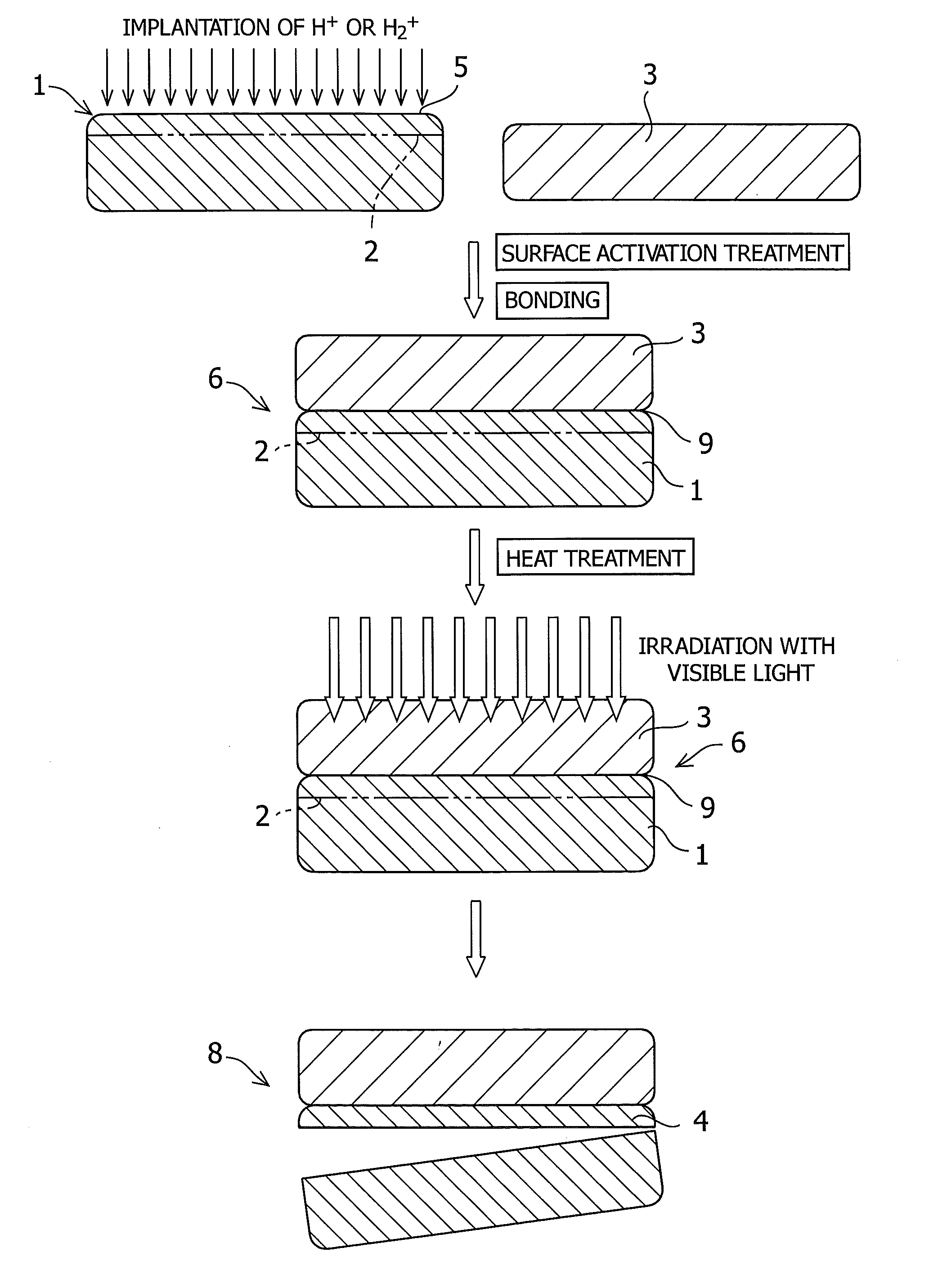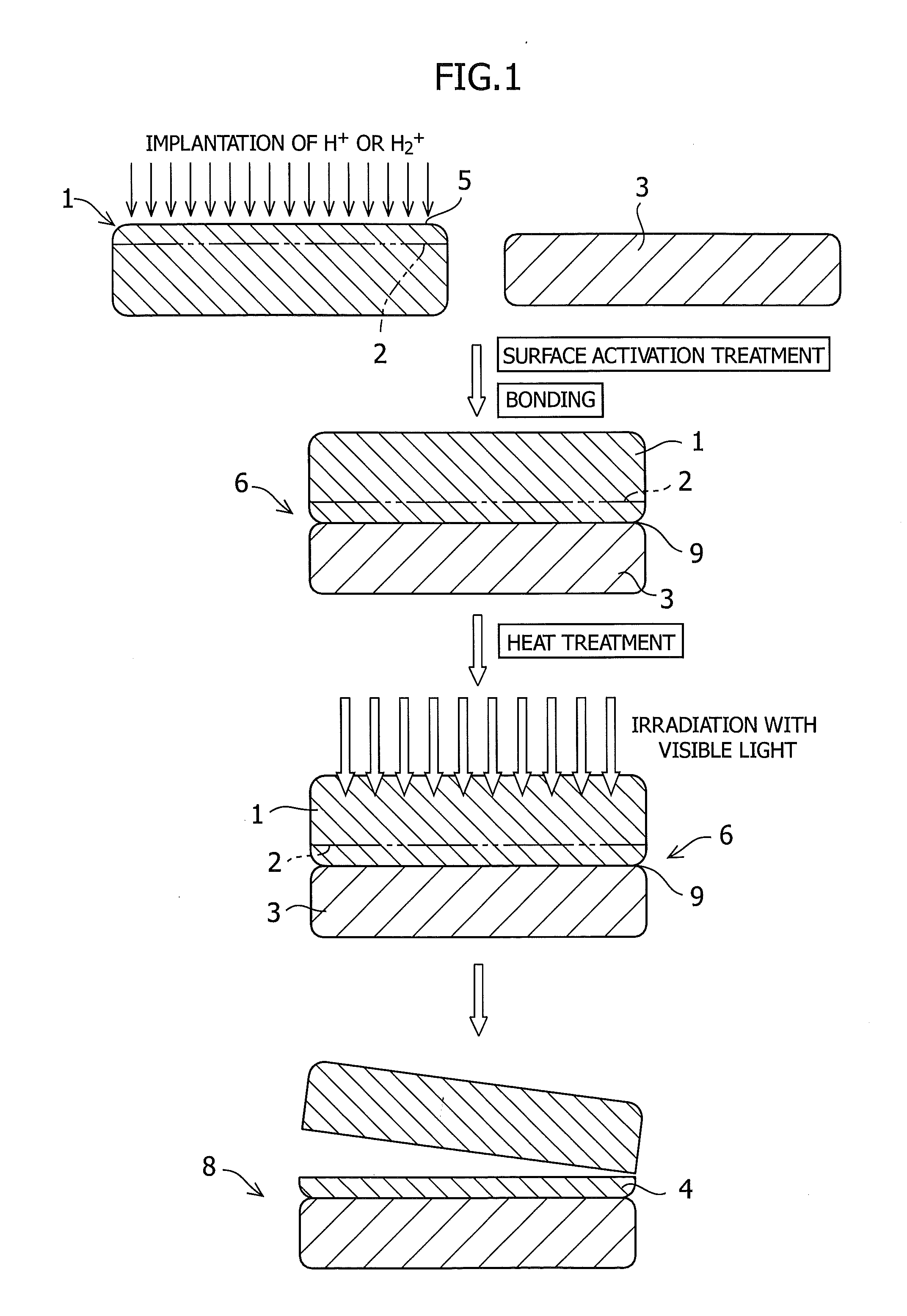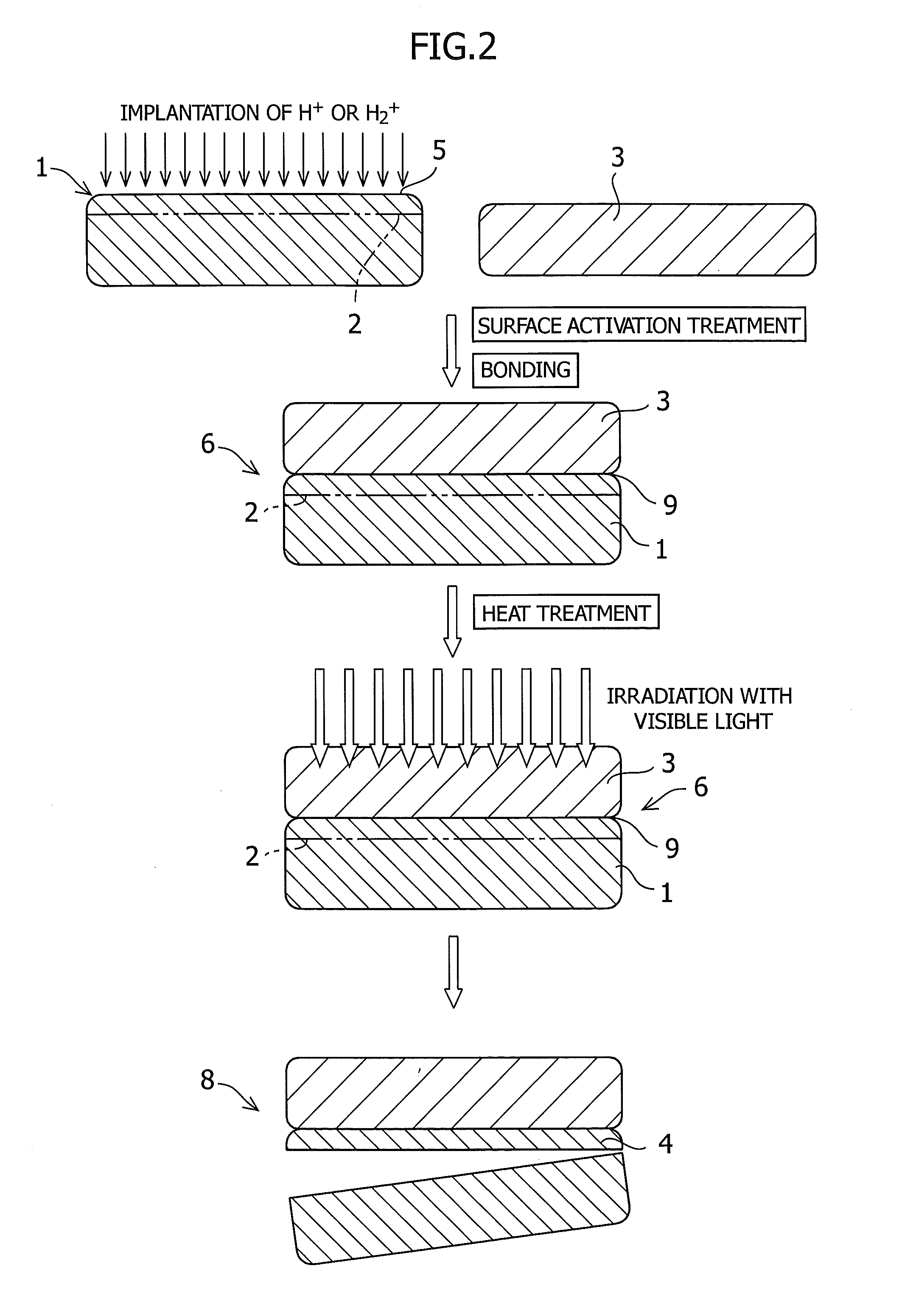Method for manufacturing composite substrate comprising wide bandgap semiconductor layer
a semiconductor layer and composite substrate technology, applied in the direction of semiconductor devices, electrical equipment, basic electric elements, etc., can solve the problems of high-performance lasers, difficult to apply gan to power semiconductors, and large defects in deposited gan, so as to prevent cracks or chips of bonded wafers, the effect of cost reduction
- Summary
- Abstract
- Description
- Claims
- Application Information
AI Technical Summary
Benefits of technology
Problems solved by technology
Method used
Image
Examples
example 1
[0071]Implantation of H2+ ions into a GaN substrate of 50 mm in diameter was carried out in a dose amount of 1.35×1017 atoms / cm2 at an accelerating voltage of 75 KeV. Subsequently, a silicon substrate of 50 mm in diameter to serve as a handle substrate was prepared, and the both substrates were subjected to an ozone water treatment, a UV ozone treatment, an ion beam treatment, or a plasma activation treatment. The substrates were bonded to each other at room temperature, subjected to a heat treatment at 250° C. for 24 hours, and then irradiation with a laser of 532 nm from the transparent GaN substrate side. The irradiation energy was about 0.5 J / cm2. After the irradiation, the application of a light mechanical impact to the bonded surfaces succeeded in transfer of a film of the GaN onto the silicon substrate. The thickness of the GaN transferred in this case was 290 nm.
[0072]This has revealed that the quality of the film transferred is independent of the type of the activation.
example 2
[0073]Implantation of H2+ ions into a GaN substrate of 50 mm in diameter was carried out in a dose amount of 1.35×1017 atoms / cm2 at an accelerating voltage of 75 KeV. Subsequently, a silicon substrate of 50 mm in diameter to serve as a handle substrate was prepared, and the both substrates were subjected to an ion beam activation treatment. The substrates were bonded to each other at room temperature, and subjected to a heat treatment at 250° C. for 24 hours. After preparing three sets of substrates of the same kind in total, visible light irradiation was carried out from the transparent substrate side (quartz side) with the use of a green laser (wavelength: 532 nm), RTA, or a flash lamp.
[0074]In the condition for laser irradiation in this case, the oscillation frequency was 25 mJ@3 kHz with an output of 75 W. The entire surface of the substrate was subjected to irradiation with 1.2 J / cm2.
[0075]In the case of RTA, a pyrometer was placed to observe the bonded surfaces for temperature...
example 3
[0081]Implantation of H+ ions into a ZnO substrate of 50 mm in diameter was carried out in a dose amount of 9.5×1016 atoms / cm2 at an accelerating voltage of 80 KeV. Subsequently, a silicon substrate of 50 mm in diameter to serve as a handle substrate was prepared, and the both substrates were subjected to a plasma activation treatment. The substrates were bonded to each other at room temperature, subjected to a heat treatment at 250° C. for 24 hours, and then irradiation with a Xe flash lamp from the ZnO substrate side. The pulse width was about 1 millisecond. After the irradiation, the application of a light mechanical impact to the bonded surfaces succeeded in transfer of a film of the ZnO onto the silicon substrate. The thickness of the ZnO transferred in this case was 550 nm.
PUM
 Login to View More
Login to View More Abstract
Description
Claims
Application Information
 Login to View More
Login to View More - R&D
- Intellectual Property
- Life Sciences
- Materials
- Tech Scout
- Unparalleled Data Quality
- Higher Quality Content
- 60% Fewer Hallucinations
Browse by: Latest US Patents, China's latest patents, Technical Efficacy Thesaurus, Application Domain, Technology Topic, Popular Technical Reports.
© 2025 PatSnap. All rights reserved.Legal|Privacy policy|Modern Slavery Act Transparency Statement|Sitemap|About US| Contact US: help@patsnap.com



